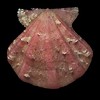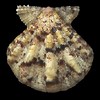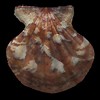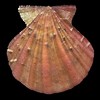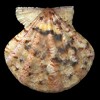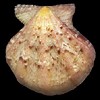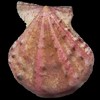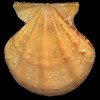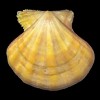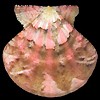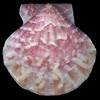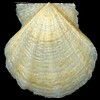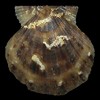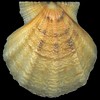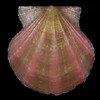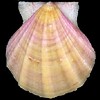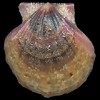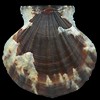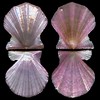flexuosus vs. glaber
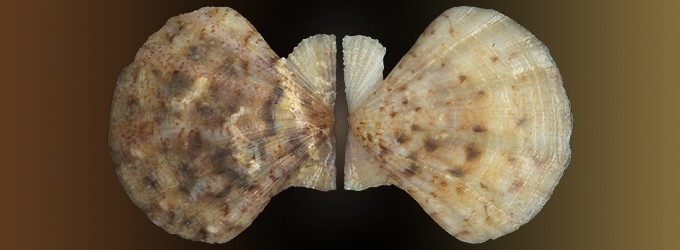
Flexopecten flexuosus (Poli, 1795) is thicker than Flexopecten
hyalinus (Poli, 1795) and less rounded.
Fl. hyalinus has flatter ribs, is translucent and is smaller.
The valves of flexuosus show a different shape than glaber's
ones.
Good! If I have a glaber somewhere, I will be able to compare.
Fl. flexuosus has five to six ribs. The left valve can be paler
than the right one.
Fl. glaber (Linnaeus, 1758) has ten flat and large ribs. The right
valve can be paler than the left one.
Great ! Here's a nice difference. Left valve in flexuosus, right
valve in glaber.
More: flexuosus has crenulated margins. Glaber's ones show
growth lines, sometimes.
So, here again, a distinctive feature. We are lucky. So what's the shell
pictured above ?
Oops! All my flexuosus have a right valve paler
than the left, as if all were glaber. But they aren't, sure.
And the glaber... have their right valves paler than the left ones,
that's right.
So, this difference in colouration of the valves cannot be used as a distinctive
feature, at least in my drawers. The margins of flexuosus are not
always fully crenulated, but often; the best crenulations occuring on
the form pyxoideus Locard, 1888.
10, 7, 6, 5, 7, 10, 6, 8, 7 and 6... That's the number of the ribs of
the first ten glaber I find.
More than five... Around 7, sometimes 10.
5, 5, 5, 7, 5, 5, 6, 6, 7 and 8... The number of the ribs of the first
ten flexuosus I find.
Less than ten... Around 6, often 5. But what are exactly these ribs I
count ?
